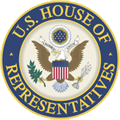The Clean Power Plan Will Improve Public Health, Slow Climate Change
June 3, 2014
Yesterday, the Environmental Protection Agency, under President Obama’s Climate Action Plan, proposed a plan to cut greenhouse gas emissions from existing plants 30% below 2005 levels and reduce smog and soot pollutants by 25% by 2030. This common-sense proposal, the Clean Power Plan, has the potential to be one of the most signifcant steps any country has taken to combat climate change and its dangerous effects on regions across the nation, including extreme weather, water shortages, rising food prices, and seasonal allergies.
Power plants are the largest source of carbon dioxide emissions in the United States, making up roughly one-third of all domestic greenhouse gas emissions. The Clean Power Plan will cut 730 million metric tons of carbon pollution by 2030, which is equal to:
- Annual emissions from more than 150 million cars, or almost two-thirds of the nation’s passenger vehicles, or
- The annual emissions from powering 65 million homes, over half the homes in America.
A recent Washington Post – ABC News poll found that the majority of Americans support the federal government’s efforts to reduce carbon emissions:
- “70 percent say the federal government should require limits to greenhouse gases from existing power plants.”
- “57 percent of Republicans, 76 percent among independents and 79 percent of Democrats support state-level limits on greenhouse gas emissions.”
- “The overall results are closely in line with Post-ABC polling since 2009, where between 65 and 75 percent have supported limits on greenhouse gases from power plants.”
Health organizations, business community leaders, and religious groups are also coming out in support of the EPA’s proposed rule:
- The American Lung Association: “Power plant pollution makes people sick and cuts short lives. We are pleased to see significant health benefits from the U.S. Environmental Protection Agency’s proposed limits on carbon pollution from power plants, which would reduce the burden of air pollution in America.” [Press Release, 06/02/14]
- “A coalition of 176 companies, including Unilever, Mars Inc. and clothing maker VF Corp., sent letters Monday to the Obama administration and congressional leaders to support the administration’s proposal to limit power plant carbon dioxide emissions.” [The Hill, 06/02/14]
- U.S. Conference of Bishops: “We are pastors in a faith tradition that teaches, as Pope Francis recently stated, ‘Creation is a gift, it is a wonderful gift that God has given us, so that we care for it and we use it for the benefit of all, always with great respect and gratitude.’ The best evidence indicates that power plants are the largest stationary source of carbon emissions in the United States, and a major contributor to climate change.” [Letter, 05/29/14]
While supplying Americans with reliable, affordable power, the Clean Power Plan will reduce pollution, improve public health, spur innovation, and create jobs. Here’s a closer look at a few of the benefits:
Public Health
- The Clean Power Plan will result in climate and health benefits worth an estimated $55 billion to $93 billion per year in 2030.
- From smog and soot reductions alone, every dollar invested through the Clean Power Plan, will mean $7 in health benefits for American families.
- For American families, the Clean Power Plan will mean avoiding:
- 2,700 to 6,600 premature deaths
- 140,000 to 150,000 asthma attacks in children
- 340 to 3,300 heart attacks
- 2,700 to 2,800 hospital admissions
- 470,000 to 490,000 missed school days
Affordable, Reliable Energy
- When the Clean Power Plan is fully implemented in 2030, electricity bills are expected to be roughly 8 percent lower.
- There will be enough capacity across the U.S. electricity system to meet the anticipated level of demand, and coal and natural gas will remain the two leading sources of electricity generation, each providing more than 30 percent of projected generation in 2030.
Innovation, Jobs, and Economic Growth
- As the power sector modernizes and increases its focus on energy efficiency, states, cities, and businesses will continue to put Americans to work in good-paying jobs.
- The Clean Power Plan will ensure that the United States maintains its competitive edge and continues to capitalize on the American ingenuity by investing in ground-breaking technologies.
Click here to read the PDF.
Email Updates
Latest From the House Floor
Legislative Calendar
| S | M | T | W | T | F | S |
|---|---|---|---|---|---|---|
|
|
1 |
2 |
3 |
4 |
5 |
6 |
|
7 |
8 |
9 |
10 |
11 |
12 |
13 |
|
14 |
15 |
16 |
17 |
18 |
19 |
20 |
|
21 |
22 |
23 |
24 |
25 |
26 |
27 |
|
28 |
29 |
30 |
31 |
|
|
|
| S | M | T | W | T | F | S |
|---|---|---|---|---|---|---|
|
|
|
|
|
1 |
2 |
3 |
|
4 |
5 |
6 |
7 |
8 |
9 |
10 |
|
11 |
12 |
13 |
14 |
15 |
16 |
17 |
|
18 |
19 |
20 |
21 |
22 |
23 |
24 |
|
25 |
26 |
27 |
28 |
29 |
30 |
31 |
- Federal holiday
- Voting day
- Added Voting Day
- CANCELED VOTES
- Today

